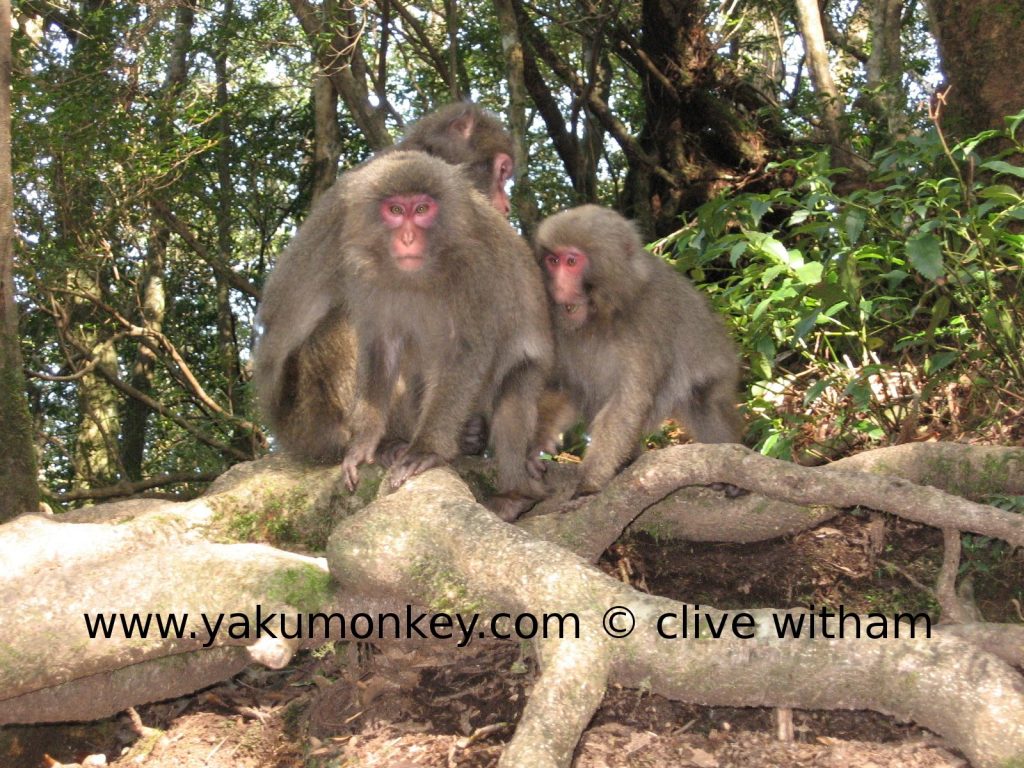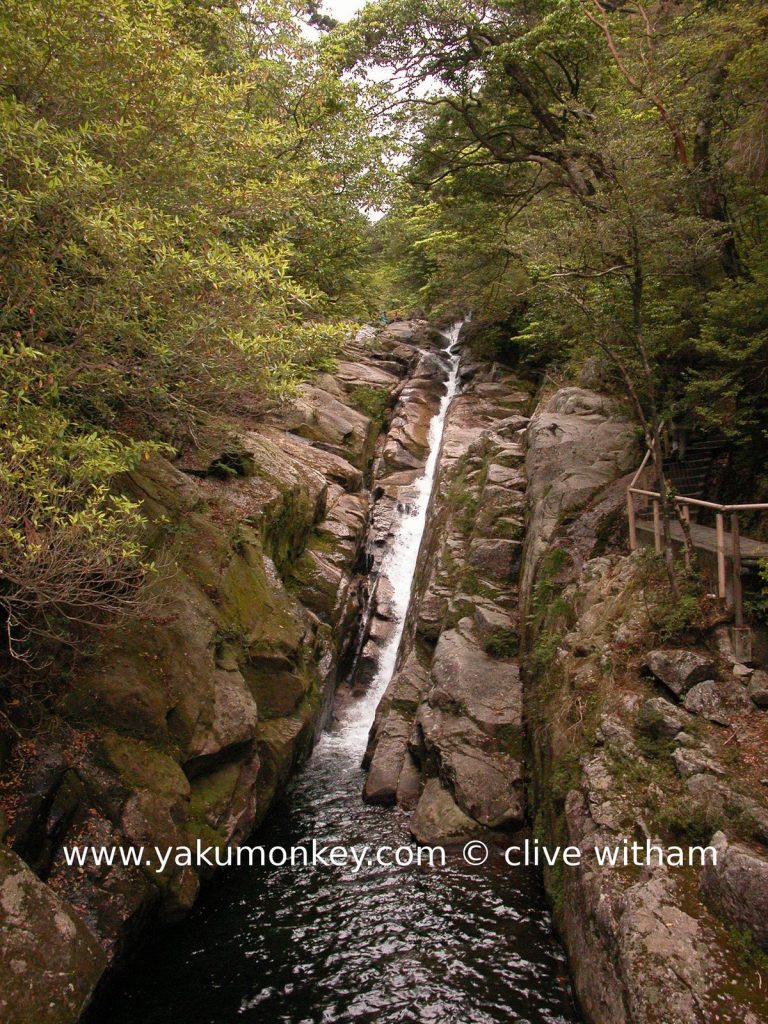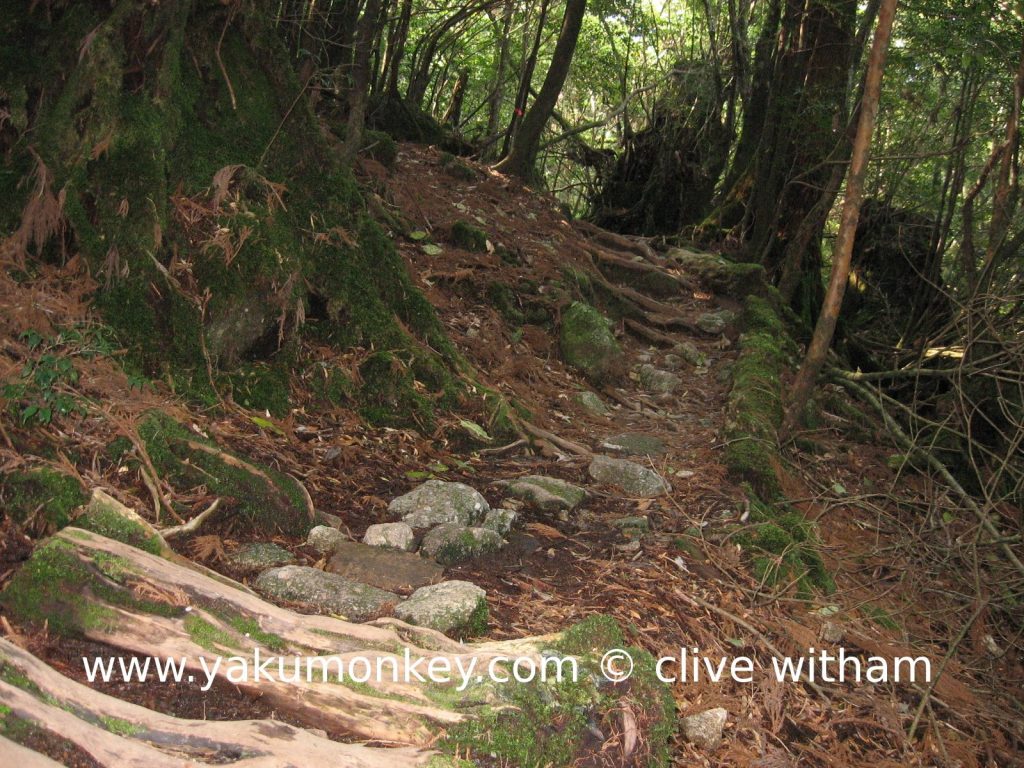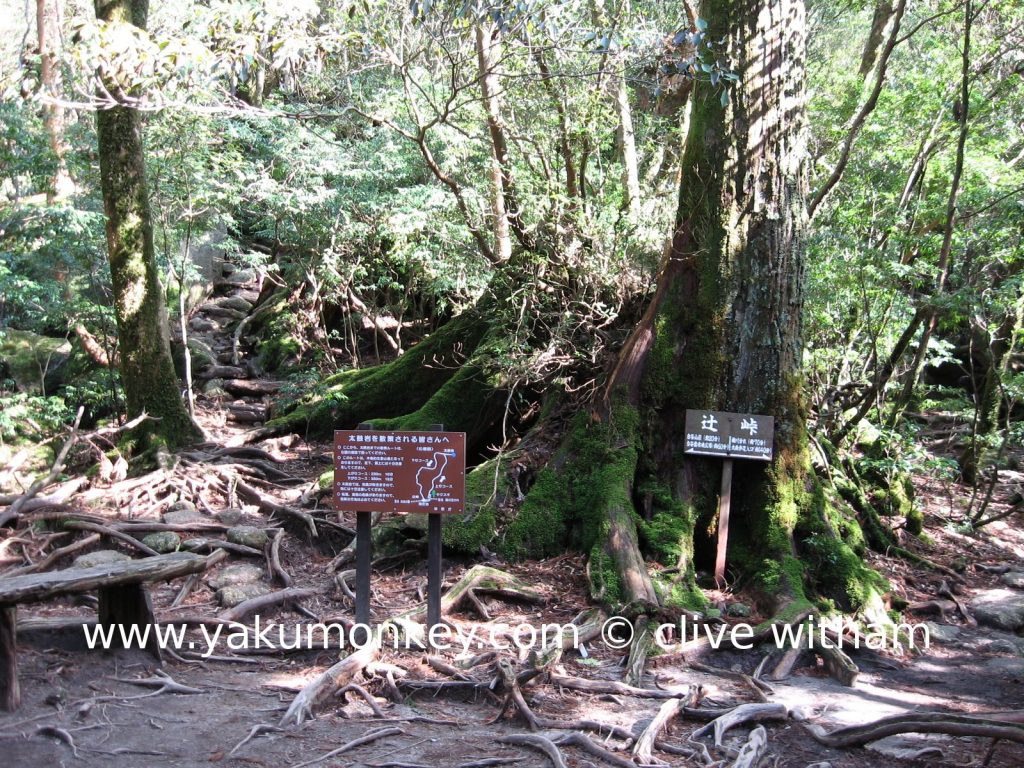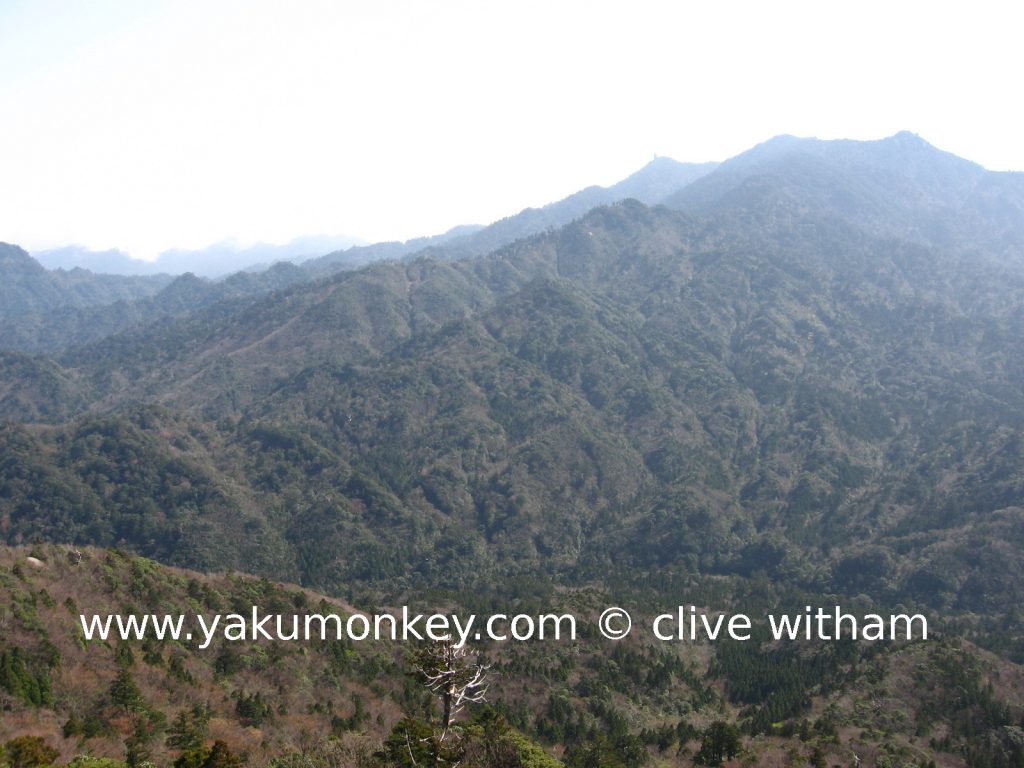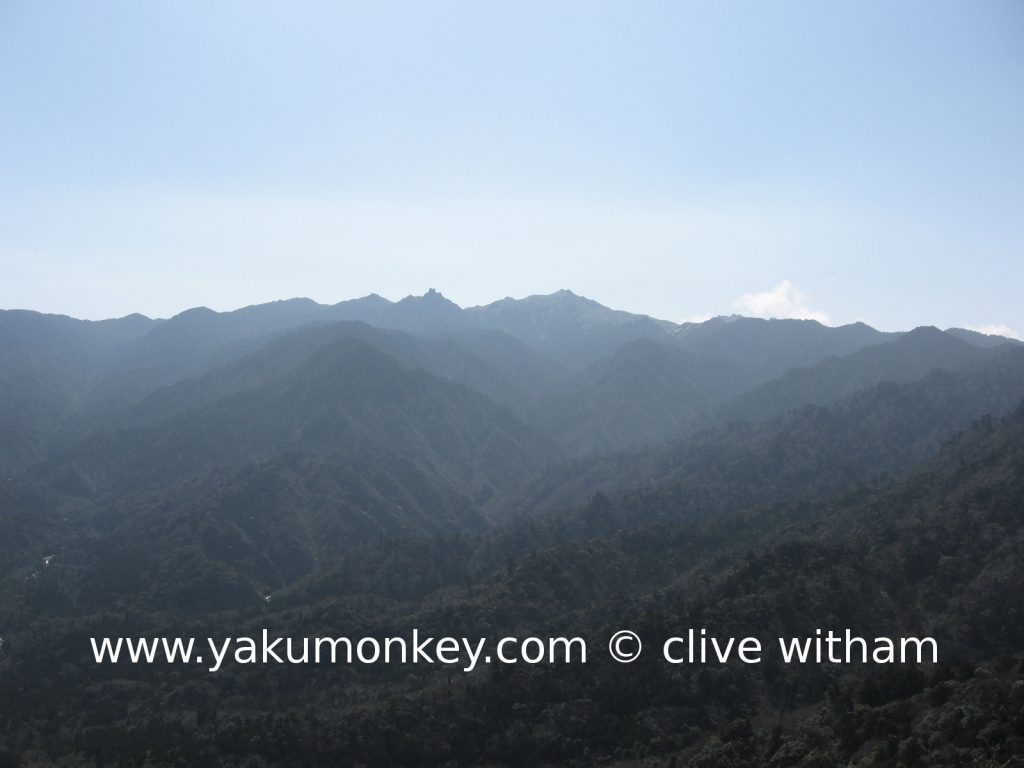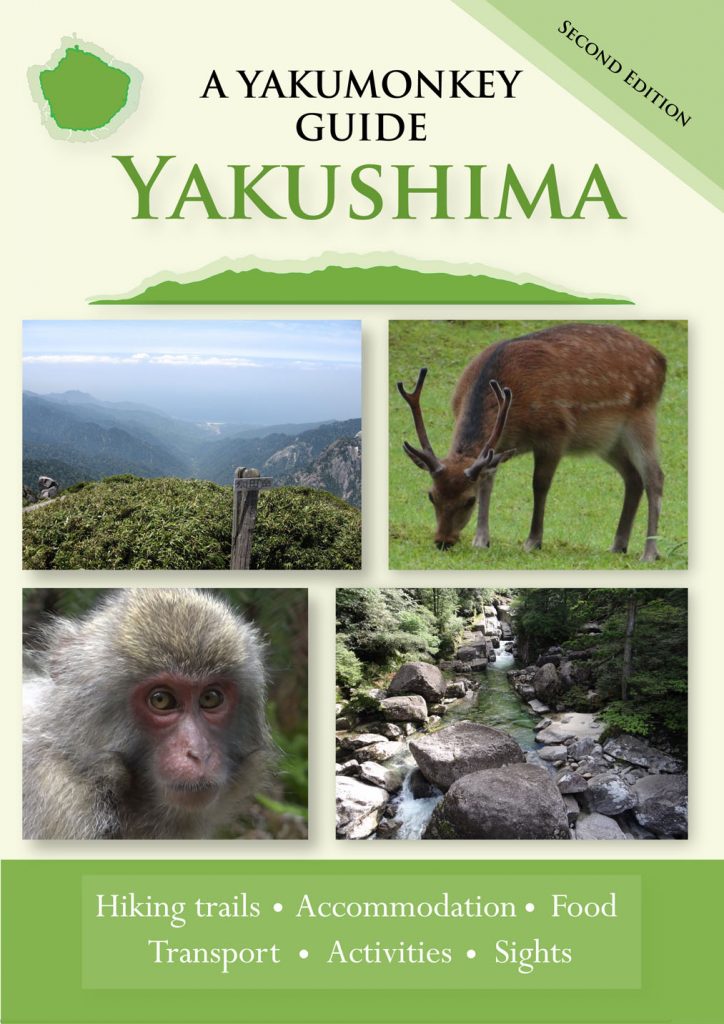KUSUGAWA TRAIL & SHIRATANI UNSUIKYO
 |
| KUSUGAWA TRAIL 楠川歩道 |
You don’t see much about the Kusugawa trail in tourist information. This is because it starts at the coast and snakes up to Shiratani Unsuikyo. You can get to Shiratani Unsuikyo by car or bus, so why hike up there?
Well every time I’ve been along here, it has been virtually empty of people – only monkeys and deer. It’s a great trail especially when the mountains are full of tourists and it is full of the history of logging with the crumbling remains of wood kilns.
The trail begins at the coast and is signposted in English from the main road at the village of Kusugawa. It’s a long way along this road so some form of transport would be better.
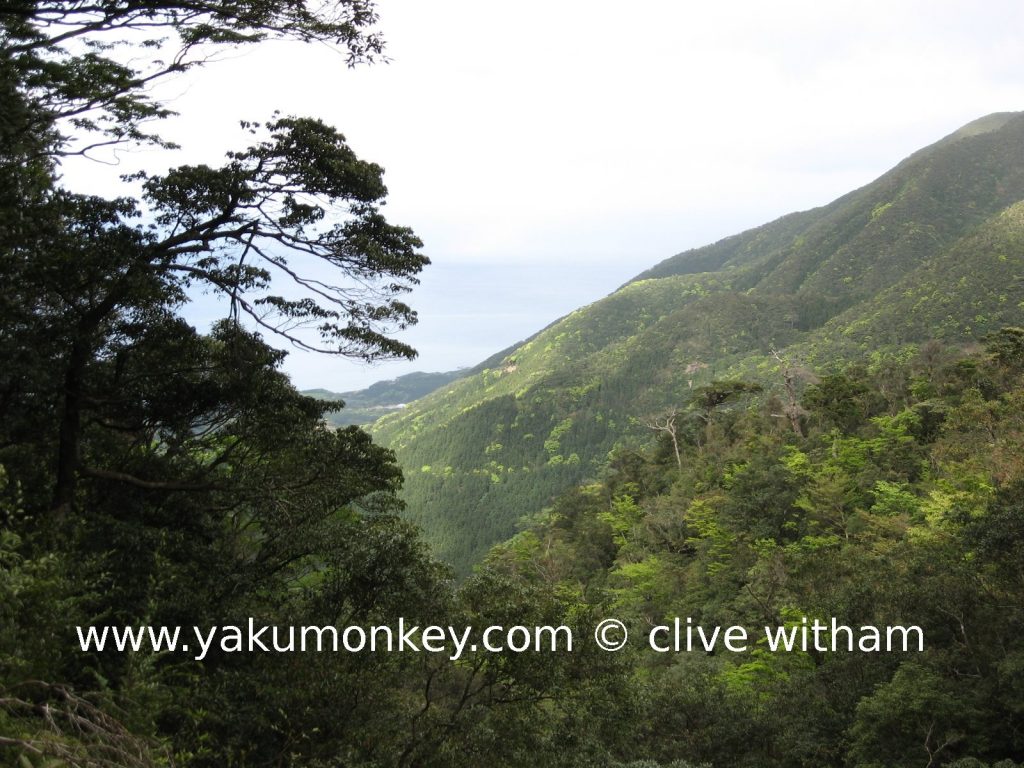 |
| Views to the coast from Kusugawa Trail, Yakushima |
If you want to go straight up from here, it takes 1-2 hours to hike up to Shiratani Unsuikyo and the trail is easy to follow as it was part of the main Edo Period logging path.
When you reach the top of the lower trail, you are at Shiratani Unsuikyo. You could have driven up by car or bus but it’s just not the same!
 |
| SHIRATANI UNSUIKYO 白谷雲水峡 |
Shiratani can be reached via the Kusugawa trail above or more commonly by car or bus on the newly widened mountain road from Miyanoura.
It has always been one of my favourite trail areas on Yakushima because of its ease of access and the quality of the trails that start from there. If you only hike in one area on Yakushima, I recommend coming here and taking the 150 min course.
There is an entrance fee of ¥300 to get into the trail but you also get a leaflet in English.
Shiratani Unsuikyo Leaflet (English)
The path follows the river for the first section of steps and walkways. The highlight here is ‘Sasuga Otoshi’ waterfall:
And the 3,000 year old Yayoi sugi:
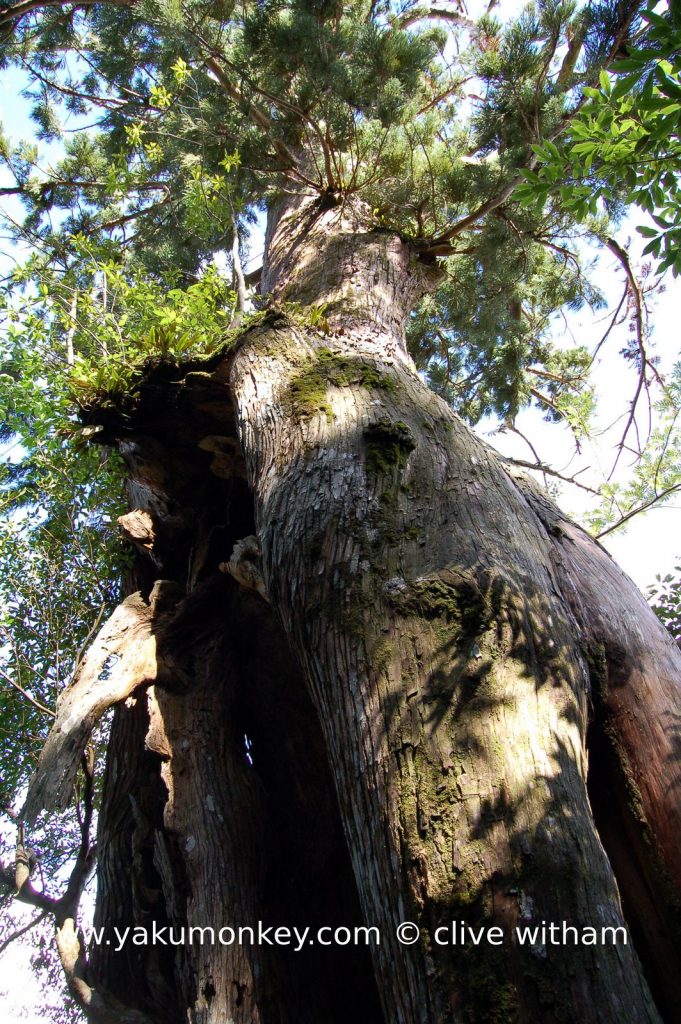 |
| Yayoi sugi |
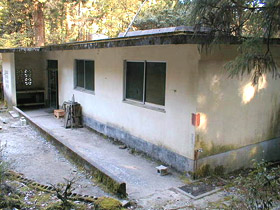 |
| Shiratani hut |
For more information about the Kusugawa trail and Shiratani Unsuikyo – check out the one and only Yakumonkey Guide to Yakushima

